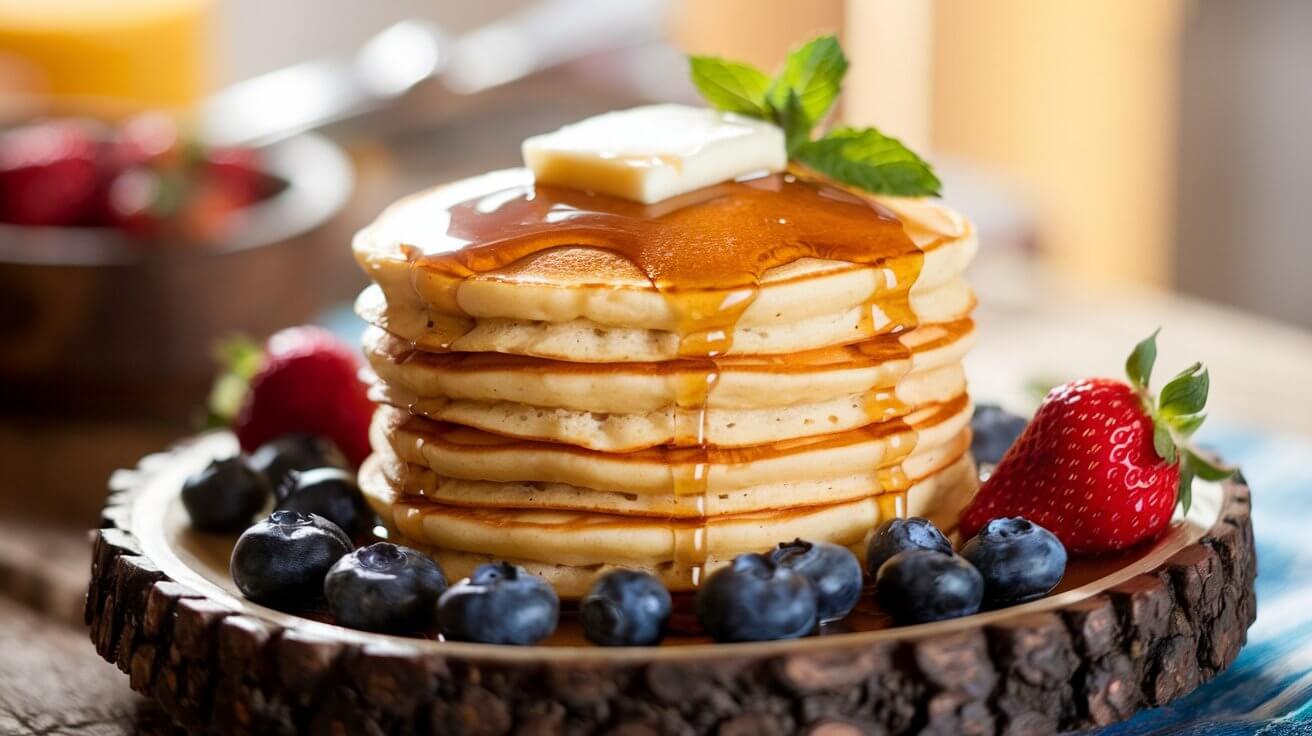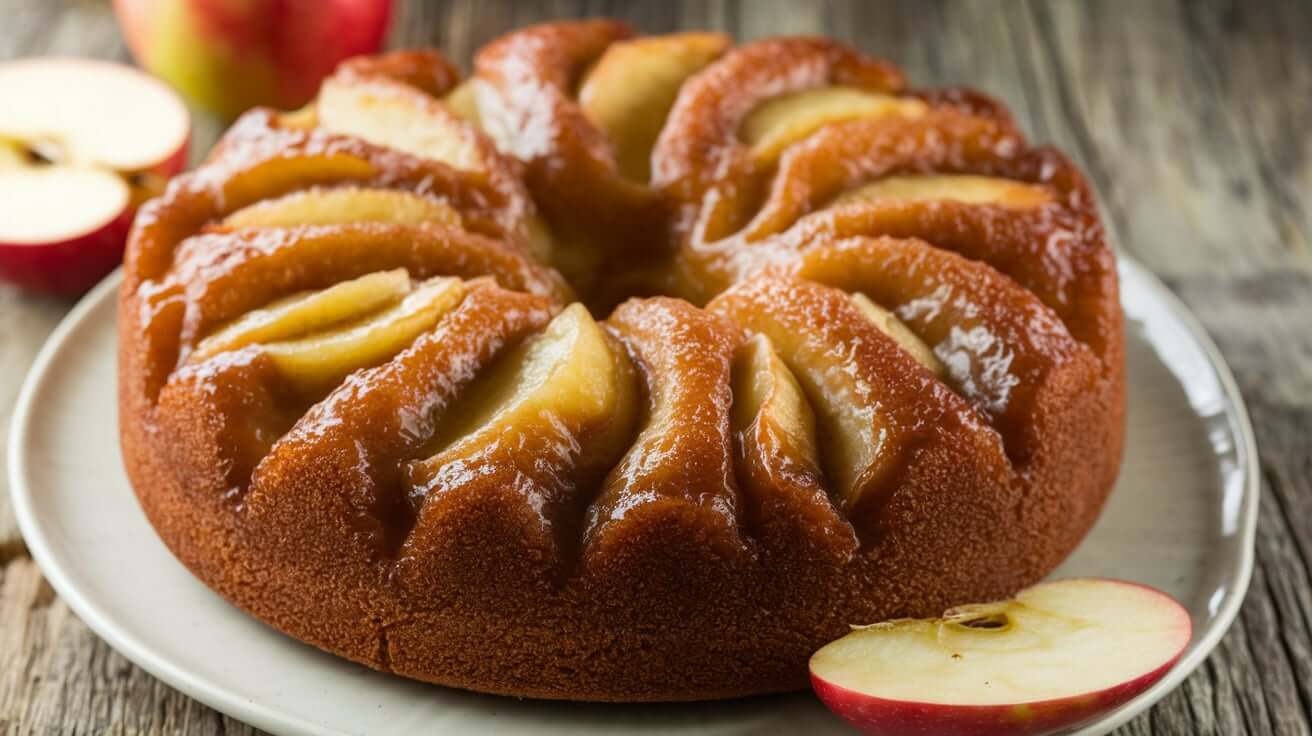The Ultimate Buttermilk Pancake Recipe: A Comprehensive Guide to Fluffy Perfection

Pancakes are a beloved breakfast staple enjoyed worldwide for their simplicity, versatility, and comforting taste. Among the myriad of pancake variations, buttermilk pancakes stand out for their rich flavor and irresistibly fluffy texture. Whether you’re a seasoned cook or a kitchen novice, mastering the art of buttermilk pancakes is a rewarding endeavor that promises delicious results every time. In this comprehensive guide, we’ll delve deep into the world of buttermilk pancakes, exploring their history, essential ingredients, step-by-step preparation methods, tips for perfection, and creative variations to elevate your breakfast experience.
Table of Contents
- A Brief History of Buttermilk Pancakes
- Essential Ingredients
- Step-by-Step Preparation
- Pro Tips for Perfect Buttermilk Pancakes
- Healthier Alternatives and Modifications
- Creative Variations and Flavor Enhancements
- Nutritional Information
- Frequently Asked Questions (FAQs)
- Conclusion
A Brief History of Buttermilk Pancakes
Pancakes have been a beloved breakfast item for centuries, with evidence of pancake-like dishes dating back to ancient civilizations such as the Greeks and Romans. However, the modern pancake as we know it, particularly the buttermilk variety, has its roots firmly planted in American culinary tradition.
Buttermilk itself originates from the dairy byproduct left after churning butter from cream. Historically, buttermilk was a staple in many households, valued for its tangy flavor and tenderizing properties in cooking. Early American settlers incorporated buttermilk into pancake recipes to enhance flavor and texture, resulting in the light and fluffy pancakes that have become a morning favorite.
Over time, buttermilk pancakes gained popularity due to their versatility and the richness they bring to a simple batter. Today, buttermilk pancakes are a cornerstone of breakfast menus in diners and homes alike, celebrated for their ability to pair beautifully with an array of toppings and accompaniments.
Essential Ingredients
The foundation of a perfect buttermilk pancake lies in its ingredients. Each component plays a critical role in achieving the desired flavor, texture, and appearance.
Buttermilk: The Heart of Flavor
Buttermilk is the cornerstone of buttermilk pancakes, contributing a subtle tang and richness that sets these pancakes apart from their regular counterparts. The acidity in buttermilk reacts with the leavening agents, producing carbon dioxide bubbles that create a light and airy texture.
Choosing Buttermilk:
- Use fresh buttermilk for the best flavor. If you don’t have buttermilk on hand, you can make a substitute by adding one tablespoon of lemon juice or vinegar to one cup of milk. Let it sit for 5 minutes before using.
Flour: Building the Structure
All-Purpose Flour is the most commonly used flour in pancake recipes due to its balanced protein content, which provides structure without making the pancakes too dense.
Alternative Flours:
- Whole Wheat Flour: Adds a nutty flavor and increases the fiber content.
- Self-Rising Flour: Contains added baking powder and salt, altering the leavening balance.
Leavening Agents: Creating Fluffiness
Proper leavening is essential for achieving fluffy pancakes. The combination of baking powder and baking soda is typical in buttermilk pancake recipes.
- Baking Powder is a double-acting leavening agent, releasing carbon dioxide bubbles when wet and again when heated.
- Baking Soda requires an acidic ingredient (buttermilk) to activate, providing an initial rise and enhancing the flavor.
Sugar: Balancing the Flavors
Granulated Sugar adds sweetness to the pancakes and aids in browning, contributing to a desirable golden color.
Adjusting Sweetness:
- To make less sweet pancakes, reduce the sugar by a tablespoon or omit it altogether, though this may slightly affect browning and flavor depth.
Salt: Enhancing the Taste
A pinch of salt is crucial in balancing the sweetness and enhancing the overall flavors of the pancake batter.
Eggs: Binding and Richness
Eggs provide structure and richness to the pancakes, helping to bind the ingredients together and contributing to a tender crumb.
Butter: Adding Moisture and Flavor
Melted Unsalted Butter imparts a rich flavor and adds moisture to the batter, resulting in soft and luscious pancakes.
Note: Unsalted butter allows you to control the salt content more precisely.
Vanilla Extract: A Hint of Sweetness
Vanilla Extract adds depth and complexity to the pancake batter, enhancing the overall flavor profile without overpowering the other ingredients.
Step-by-Step Preparation
Creating the perfect buttermilk pancakes involves a series of carefully executed steps. Follow this guide to ensure your pancakes turn out light, fluffy, and flavorful every time.
Gathering Your Tools and Ingredients
Tools Needed:
- Large mixing bowl
- Whisk
- Measuring cups and spoons
- Skillet or griddle
- Spatula
- Ladle or measuring cup for pouring batter
- Cooking thermometer (optional, for precise temperature control)
- Cooling rack (optional)
Ingredients:
- 2 cups all-purpose flour
- 2 tablespoons granulated sugar
- 2 teaspoons baking powder
- 1 teaspoon baking soda
- 1/2 teaspoon salt
- 2 cups buttermilk
- 2 large eggs
- 1/4 cup melted unsalted butter
- 1 teaspoon vanilla extract
Preparing the Batter
- Preheat Your Griddle or Skillet:
- Place your griddle or skillet on the stove over medium heat. Allow it to heat up thoroughly; this ensures even cooking.
- Lightly grease the surface with butter or oil to prevent sticking. Wipe away any excess with a paper towel to avoid greasy pancakes.
- Mix Dry Ingredients:
- In a large mixing bowl, whisk together the all-purpose flour, sugar, baking powder, baking soda, and salt. This ensures that the leavening agents are evenly distributed throughout the flour.
- Combine Wet Ingredients:
- In another bowl, whisk the buttermilk, eggs, melted butter, and vanilla extract until well combined. Ensure that the butter is slightly cooled to prevent cooking the eggs.
- Combine Wet and Dry Mixtures:
- Make a well in the center of the dry ingredients and pour in the wet mixture.
- Gently stir the ingredients together using a whisk or spatula until just combined. The batter should be slightly lumpy; overmixing can lead to tough pancakes.
- Let the Batter Rest (Optional):
- Allowing the batter to rest for about 5 minutes can help the flour hydrate fully and the gluten relax, resulting in more tender pancakes.
Cooking the Pancakes to Perfection
- Test the Griddle Temperature:
- To check if the griddle is ready, sprinkle a few drops of water onto the surface. If they dance and evaporate immediately, the griddle is hot enough.
- Aim for a consistent medium heat; too high can burn the pancakes, while too low can make them dense.
- Pouring the Batter:
- Use a ladle or measuring cup to pour 1/4 cup of batter onto the center of the griddle for each pancake. This ensures uniformly sized pancakes.
- Cooking Process:
- First Side: Cook until bubbles form on the surface and the edges start to look set, approximately 2-3 minutes.
- Flip Carefully: Use a spatula to gently flip the pancake, being careful not to deflate the batter.
- Second Side: Cook until the second side is golden brown, about 2 minutes.
- Repeat:
- Continue cooking the remaining batter, adjusting the heat as necessary to maintain an even temperature.
Serving Suggestions
Serve your buttermilk pancakes warm, stacked high with your favorite toppings. Classic options include:
- Maple Syrup: A traditional and beloved choice.
- Fresh Berries: Strawberries, blueberries, raspberries, or a mixed berry compote add freshness and color.
- Whipped Cream: Light and airy, perfect for a touch of indulgence.
- Butter: A pat of butter melting on top enhances richness.
- Honey or Agave Syrup: Natural sweeteners for a different flavor profile.
- Nut Butters: Peanut butter, almond butter, or cashew butter add protein and creaminess.
- Fruit Compotes: Apples, peaches, or bananas cooked with a bit of sugar and spices.
Pro Tips for Perfect Buttermilk Pancakes
Achieving pancake perfection involves attention to detail and a few insider tips. Implement these strategies to elevate your buttermilk pancakes to restaurant-quality standards.
Temperature Control
Maintaining the right temperature is crucial. A griddle that’s too hot will burn the pancakes on the outside while leaving the inside undercooked. Conversely, a griddle that’s not hot enough can result in pale, doughy pancakes.
Solution:
- Use a cooking thermometer to monitor the griddle temperature, aiming for around 375°F (190°C).
- Adjust the heat as necessary during cooking to maintain consistency.
Avoiding Overmixing
Overmixing the batter can develop the gluten in the flour excessively, leading to tough and rubbery pancakes.
Solution:
- Stir the batter just until the wet and dry ingredients are combined. It’s okay to have small lumps.
- Use a gentle folding motion with a spatula or whisk.
Keeping Pancakes Warm
To serve pancakes piping hot without them becoming soggy, use a warming technique.
Solution:
- Preheat your oven to 200°F (93°C).
- Place cooked pancakes on a baking sheet in the oven to keep them warm while you finish cooking the batch.
Consistent Batter Thickness
Ensuring an even batter consistency leads to uniform pancakes that cook evenly.
Solution:
- If the batter is too thick, add a splash of buttermilk to thin it out.
- If it’s too thin, incorporate a bit more flour, but be cautious to avoid a dry batter.
Healthier Alternatives and Modifications
While buttermilk pancakes are delicious, making mindful substitutions can enhance their nutritional profile without sacrificing flavor.
Whole Wheat Buttermilk Pancakes
Benefits:
- Increased fiber content
- Richer, nuttier flavor
Modification:
- Substitute 1 cup of all-purpose flour with 1 cup of whole wheat flour.
- You may need to add a bit more liquid as whole wheat flour can absorb more moisture.
Gluten-Free Buttermilk Pancakes
Benefits:
- Suitable for those with gluten sensitivities or celiac disease
Modification:
- Use a gluten-free all-purpose flour blend.
- Ensure the blend contains xanthan gum or another binder to maintain structure.
Dairy-Free Buttermilk Pancakes
Benefits:
- Suitable for those with lactose intolerance or dairy allergies
Modification:
- Use a dairy-free milk (such as almond milk or soy milk) combined with a tablespoon of lemon juice or vinegar to mimic buttermilk’s acidity.
Reducing Sugar Content
Benefits:
- Lower calorie count
- Reduced risk of blood sugar spikes
Modification:
- Reduce the sugar by half or substitute with natural sweeteners like honey or maple syrup.
Creative Variations and Flavor Enhancements
Buttermilk pancakes are incredibly versatile and serve as a blank canvas for a multitude of flavors and add-ins. Here are some creative twists to keep your breakfast exciting.
Blueberry Buttermilk Pancakes
Ingredients Addition:
- 1 cup fresh or frozen blueberries
Instructions:
- Gently fold the blueberries into the batter right before cooking.
- Be cautious with frozen berries to prevent the batter from discoloring.
Chocolate Chip Buttermilk Pancakes
Ingredients Addition:
- 3/4 cup semi-sweet chocolate chips
Instructions:
- Sprinkle chocolate chips onto the pancakes after pouring the batter onto the griddle, allowing them to melt slightly as the pancake cooks.
Banana and Walnut Buttermilk Pancakes
Ingredients Addition:
- 1 ripe banana, mashed
- 1/2 cup chopped walnuts
Instructions:
- Mix the mashed banana into the wet ingredients before combining with the dry ingredients.
- Fold in the chopped walnuts just before cooking.
Savory Buttermilk Pancakes
Ingredients Addition:
- 1/2 cup shredded cheddar cheese
- 1/4 cup chopped chives or green onions
- 1/2 teaspoon freshly ground black pepper
Instructions:
- Add the cheese, chives, and pepper to the batter.
- Serve with a dollop of sour cream or a side of smoked salmon for an elegant twist.
Nutritional Information
Understanding the nutritional profile of buttermilk pancakes can help you make informed dietary choices. Here’s a general overview for a standard buttermilk pancake recipe (per serving, assuming 8 pancakes):
- Calories: 200 kcal
- Protein: 6 grams
- Carbohydrates: 28 grams
- Sugars: 5 grams
- Fat: 8 grams
- Saturated Fat: 4 grams
- Fiber: 1 gram
- Sodium: 350 mg
Note: Nutritional values can vary based on ingredient brands and specific measurements used. Modifications such as using whole wheat flour or reducing sugar will alter these values accordingly.
Frequently Asked Questions (FAQs)
1. Can I make buttermilk pancakes without buttermilk?
Yes, you can substitute buttermilk with a mixture of milk and an acid. Combine 1 tablespoon of lemon juice or vinegar with 1 cup of milk, and let it sit for 5 minutes before using.
2. How do I prevent my pancakes from sticking to the griddle?
Ensure the griddle or skillet is adequately preheated and lightly greased before cooking each batch. Use a paper towel to dab off excess grease, which can cause pancakes to become oily.
3. Why are my pancakes dense instead of fluffy?
Common reasons include overmixing the batter, incorrect leavening agent measurements, or cooking at too low a temperature. Follow the recipe closely, stir the batter gently, and maintain medium heat for optimal fluffiness.
4. How can I keep pancakes warm without drying them out?
Place cooked pancakes on a baking sheet in a preheated oven at 200°F (93°C). Alternatively, use a warming drawer or an insulated container to maintain heat.
5. Can I freeze buttermilk pancakes?
Yes, cooled pancakes can be stacked with parchment paper in between and stored in a freezer-safe bag or container for up to 2 months. Reheat in a toaster or oven before serving.
6. What can I serve with buttermilk pancakes besides syrup?
Options include fresh fruits, whipped cream, yogurt, nut butters, honey, fruit compotes, bacon, sausage, or even savory toppings like smoked salmon and sour cream.
7. How do I make my pancakes extra fluffy?
Incorporate beaten egg whites into the batter to add more air, or ensure you’re using the right proportion of leavening agents. Letting the batter rest can also enhance fluffiness.
Conclusion
Buttermilk pancakes are a timeless breakfast favorite, celebrated for their delightful balance of tangy flavor and fluffy texture. By understanding the essential ingredients and mastering the preparation techniques outlined in this guide, you can create pancakes that are not only delicious but also customizable to your personal taste and dietary preferences.
Whether you’re enjoying a leisurely weekend breakfast, feeding a hungry crowd, or seeking a comforting meal any time of day, buttermilk pancakes offer versatility and satisfaction. Experiment with different flavors, toppings, and modifications to keep your breakfast table exciting and cater to a variety of palates.
Embrace the art of pancake making, and savor the simple pleasures of a perfect stack of buttermilk pancakes, crafted with care and enjoyed with loved ones.
Enjoy your culinary journey to pancake perfection!




